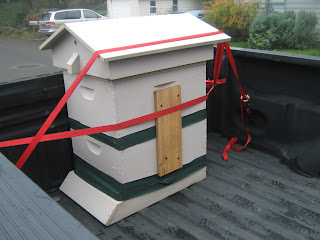If you're needing some indoor winter projects, bat houses are quick and easy to make. When most people think about bats, they conjure up scary stories and cover their heads, but they should really be welcoming them into their yards because bats are a natural pest controller! A single bat can eat up to 1,000 mosquitoes in one hour!!
I did a bit of research about bat houses and found a lot of information. I can't site one particular source because I gleaned information from about a dozen different websites.
- The wood I used came from scraps leftover from the solar food dehydrator project.
- The plastic screen came from an old window that a friend gave me after she used it to make homemade paper.
- Brown exterior latex paint came from leftover paint we had in the garage.
- Screws---who doesn't have a box of screws lying around.
- Caulk was found in the garage, leftover from a project years ago. Surprisingly it wasn't dried up.
Placement of bat houses:
- Bat houses need a minimum of seven hours of morning sunlight. Bats may not like the sunlight, but they need warmth to raise their young. They like it to be 80 to 100 degrees in July when they have their young with them.
- Place bat houses near a water source if possible.
- Bats will evacuate the home if it's in a place prone to vandalism where people are shaking or knocking on the box.
- Do not place along a busy road where dawn and dusk traffic can scare bats.
- You may place your bat house on a tree, pole, or a building; however, boxes mounted on poles or buildings tend to have a higher occupancy than those mounted on trees.
- Be careful when placing them under the eaves of a house---they may not receive enough light.
- The bat house should be mounted 15-20 feet above the ground (away from predators).
- It should not be in a place lit by bright lights at night.
- Place the bat house where the bats can fly to it freely without obstruction. Obstructions will make their flying difficult and will block the sun’s rays as well. The greatest percentage of occupied houses have flight obstructions no closer than 20 feet away.























































